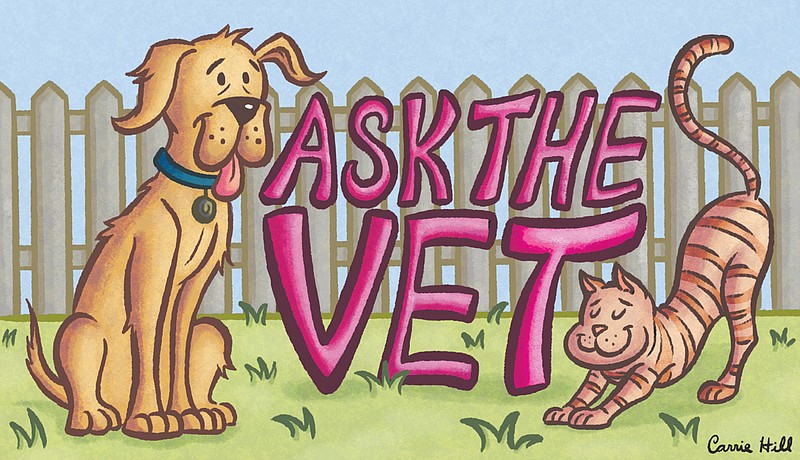Q: We have several cats, and we provide foster care for kittens from a rescue organization. I am pregnant with my first child, and we don't want our child to grow up allergic to cats. While our child is young, should we stop fostering and limit access to our family cats?
A: Quite the opposite. For years, physicians have recognized that allergies are rare in children who grow up on farms.
More recent studies have shown that pets inside the home protect children from allergies, and the protection increases with the number of pets.
One study followed nearly 1,300 children from age 6 months through 8 to 9 years. Researchers noted the number of cats and dogs in the home and tracked the children's allergy symptoms, including asthma, eczema and allergic rhinoconjunctivitis, a cause of sneezing, runny nose and itchy eyes.
Nearly half the children without pets developed allergies. Significantly fewer children who lived with pets from infancy experienced allergies as they grew up.
Having more pets in the home was associated with a lower incidence of allergy. Children who lived with five or more pets were generally free of allergies.
Intriguingly, these children were protected from animal and pollen allergies, suggesting that the children's immune systems learned to tolerate allergens from the animals themselves and the pollens they carried on their fur.
Thus, allowing your child to interact with the family cats and foster kittens will be like a vaccination that provides protection from allergies.
Q: Katie, my cocker spaniel, has goopy eyes. Her veterinarian diagnosed dry eye and prescribed an eye ointment. If her eyes are dry, why is there so much thick goop coming from her eyes? Please explain dry eye.
A: Dry eye, officially called KCS or Keratoconjunctivitis Sicca, is dryness (sicca) of the clear surface of the eye, called the cornea (kerato-), and the conjunctiva, with subsequent inflammation (-itis).
Katie's eyes exude the goop you describe because her tear glands no longer produce enough of the watery portion of her tears to balance the mucus and fat components of the tears.
Clinical signs include a thick ocular discharge; redness and swelling of the conjunctiva; a dry, lusterless cornea; and red blood vessels or dark pigmentation on the cornea. KCS induces pain, so most affected dogs squint.
The disease has many causes, including a genetic predisposition in some breeds, destruction of the tear glands by the immune system, damage to the nerves controlling the tear glands, hypothyroidism, diabetes, Cushing's disease, surgical removal of the tear gland on the third eyelid, some viral infections and some drugs.
The most common treatment is an eye drop or ointment that increases tear production, such as cyclosporin or tacrolimus. These medications minimize pain and manage the disease well, but they don't cure it, so lifelong therapy is required. Dogs with eye infections secondary to KCS also need an antibiotic eye drop or ointment until the infection clears.
In rare cases when these medications are not effective, surgical treatment is helpful.
Without adequate therapy, the pain of KCS continues, and many dogs lose their vision. So, if Katie's eyes don't return to normal and remain that way, ask your veterinarian to recheck her eyes or refer you to a veterinary ophthalmologist.
Lee Pickett, VMD, practices companion animal medicine in North Carolina. Contact her at
vet@askthevet.pet
